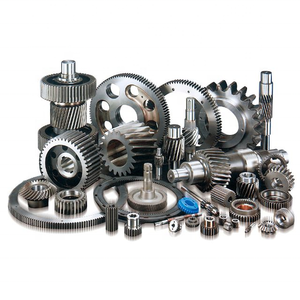The auger gearbox on a typical consumer-grade 5.5 horsepower, 22-inch cutting width snow thrower, often referred to as a “yard machine,” is generally NOT considered a permanently sealed, maintenance-free unit in the strictest engineering sense. While it is designed to be highly robust and protect its internal components effectively, understanding its sealing and lubrication characteristics is crucial for long-term reliability and proper maintenance.
(is the auger gearbox a sealed unit on a 5.5 hp yard machine 22 inch cut)
The primary function of this gearbox is to transmit power from the engine’s vertical crankshaft through a 90-degree angle to the horizontal auger shaft, driving the auger and impeller assembly. It typically consists of a die-cast aluminum or robust polymer housing containing helical or spur gears, supported by ball or needle bearings. The critical aspect regarding sealing lies in the interfaces where shafts exit the housing: the input shaft connecting to the engine’s drive system and the output shaft driving the auger/impeller.
While the housing itself is a sealed cavity, it incorporates shaft seals (often lip seals or occasionally labyrinth designs) at these exit points. These seals are vital components designed to retain lubricant within the gearbox cavity and prevent external contaminants like water, snow, ice chips, road salt, and abrasive grit from entering. However, unlike a truly hermetically sealed unit (like some permanently lubricated bearings), these seals are dynamic components subject to wear and degradation over time due to friction, temperature extremes, chemical exposure, and physical impacts from debris.
The lubrication within these gearboxes is typically a semi-fluid grease or a high-viscosity gear oil specifically formulated for enclosed gearboxes operating in cold temperatures. This lubricant provides critical film strength to protect gear teeth from wear and pitting, reduces friction, and helps dissipate heat generated during operation. It is not designed to be “filled for life” indefinitely under the demanding conditions a snow thrower endures.
Several factors contribute to the need for periodic maintenance, negating the “permanently sealed” classification:
1. Seal Degradation: Over seasons of use, shaft seals inevitably wear. Abrasive particles trapped in the seal lip accelerate this wear. Temperature cycling causes seals to harden and lose elasticity, reducing their effectiveness. Damaged or worn seals allow lubricant to leak out and contaminants to ingress.
2. Contaminant Ingress: Despite the seals’ best efforts, fine snow, water, and grit can penetrate over time, especially during heavy use or if the seals are compromised. Once inside, contaminants mix with the lubricant, forming an abrasive paste that drastically accelerates wear on gears and bearings.
3. Lubricant Breakdown: The lubricant itself undergoes shear stress from the gears, thermal cycling, and potential oxidation over time. Its protective properties diminish, reducing its ability to prevent metal-to-metal contact.
4. Venting: While not always obvious, most gearboxes require some form of pressure equalization to prevent seal damage during temperature fluctuations. This is often achieved through a simple vent hole or a permeable seal design, which is another potential (though minor) path for moisture ingress if submerged.
The consequences of neglecting this gearbox are severe and costly: accelerated gear tooth wear leading to pitting or breakage, bearing failure, increased noise and vibration, reduced power transmission efficiency, and ultimately, catastrophic gearbox failure requiring complete replacement. Repairing internal components is rarely economical on these units.
(is the auger gearbox a sealed unit on a 5.5 hp yard machine 22 inch cut)
Therefore, while the auger gearbox on a 5.5 hp, 22-inch snow thrower is a robustly enclosed assembly designed for significant durability, it is not a maintenance-free sealed unit. Proactive maintenance is essential. This primarily involves checking the lubricant level and condition annually, before the season starts, and replenishing or replacing the specified lubricant as needed. Consult the owner’s manual for the specific procedure and lubricant type (NLGI Grade 00 or 000 semi-fluid grease is common). Visually inspecting the gearbox housing and shaft areas for signs of leaks or excessive play is also prudent. Replacing worn shaft seals, while more involved, is significantly cheaper than replacing the entire gearbox and should be undertaken if leaks are detected. Understanding this distinction between “enclosed” and “permanently sealed” is key to maximizing the service life of this critical snow thrower component.


